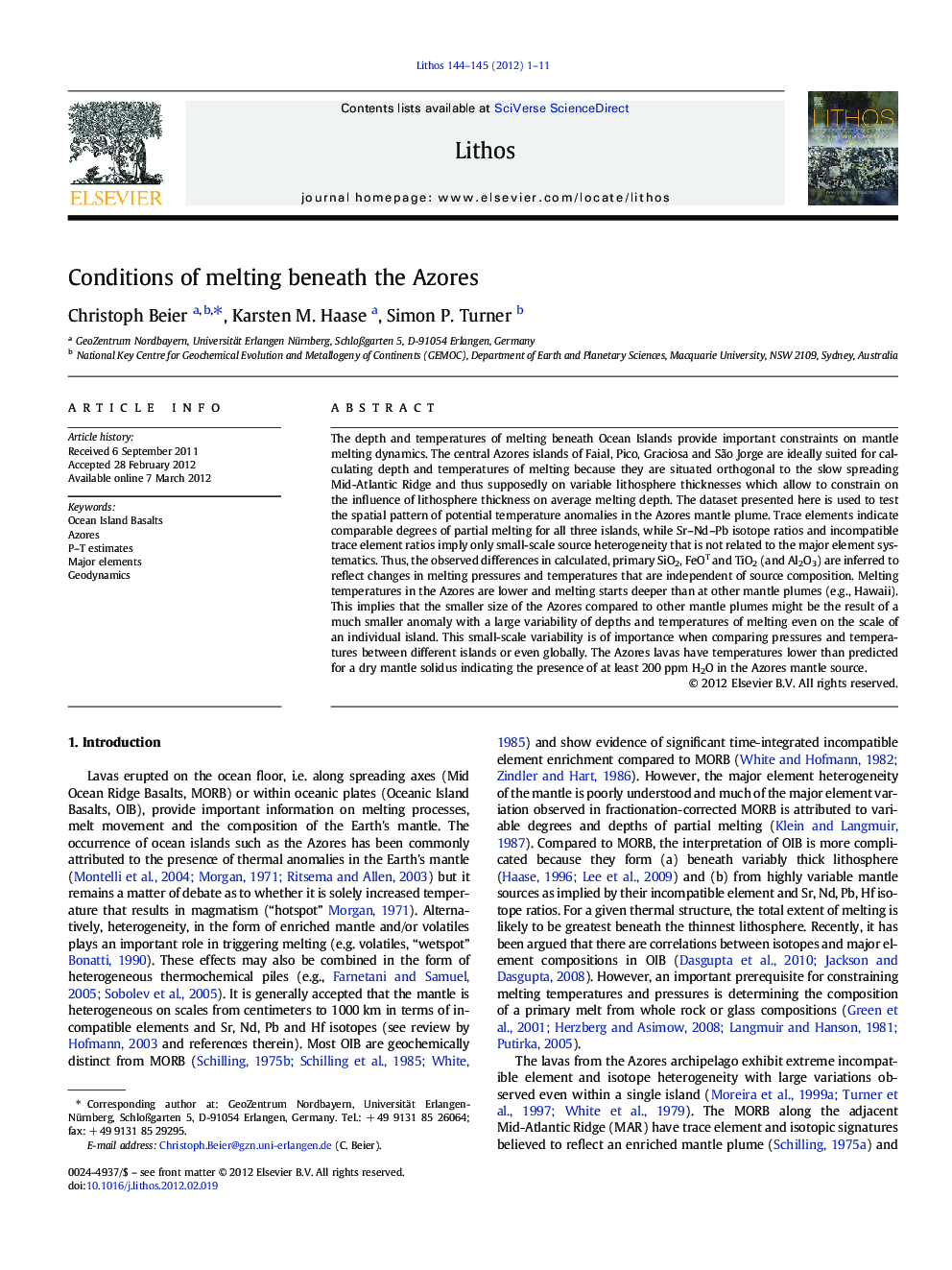| Article ID | Journal | Published Year | Pages | File Type |
|---|---|---|---|---|
| 4716557 | Lithos | 2012 | 11 Pages |
The depth and temperatures of melting beneath Ocean Islands provide important constraints on mantle melting dynamics. The central Azores islands of Faial, Pico, Graciosa and São Jorge are ideally suited for calculating depth and temperatures of melting because they are situated orthogonal to the slow spreading Mid-Atlantic Ridge and thus supposedly on variable lithosphere thicknesses which allow to constrain on the influence of lithosphere thickness on average melting depth. The dataset presented here is used to test the spatial pattern of potential temperature anomalies in the Azores mantle plume. Trace elements indicate comparable degrees of partial melting for all three islands, while Sr–Nd–Pb isotope ratios and incompatible trace element ratios imply only small-scale source heterogeneity that is not related to the major element systematics. Thus, the observed differences in calculated, primary SiO2, FeOT and TiO2 (and Al2O3) are inferred to reflect changes in melting pressures and temperatures that are independent of source composition. Melting temperatures in the Azores are lower and melting starts deeper than at other mantle plumes (e.g., Hawaii). This implies that the smaller size of the Azores compared to other mantle plumes might be the result of a much smaller anomaly with a large variability of depths and temperatures of melting even on the scale of an individual island. This small-scale variability is of importance when comparing pressures and temperatures between different islands or even globally. The Azores lavas have temperatures lower than predicted for a dry mantle solidus indicating the presence of at least 200 ppm H2O in the Azores mantle source.
► Pressures and temperatures of melting vary on the scale of a single island. ► Influence of mantle plume eastward may be neutralized by lithosphere thickness. ► Low solidus temperatures in the Azores require 200 ppm H2O in the mantle. ► Excess mantle temperatures required in the Azores are < 100 °C. ► Azores mantle plume is a wetspot rather than being solely thermally induced.
